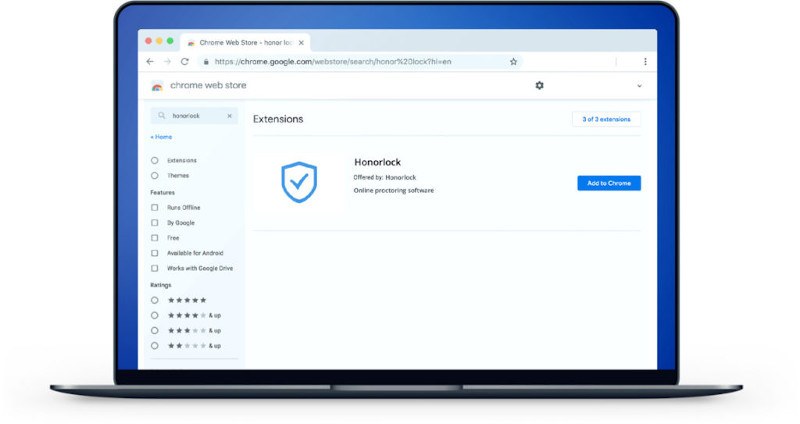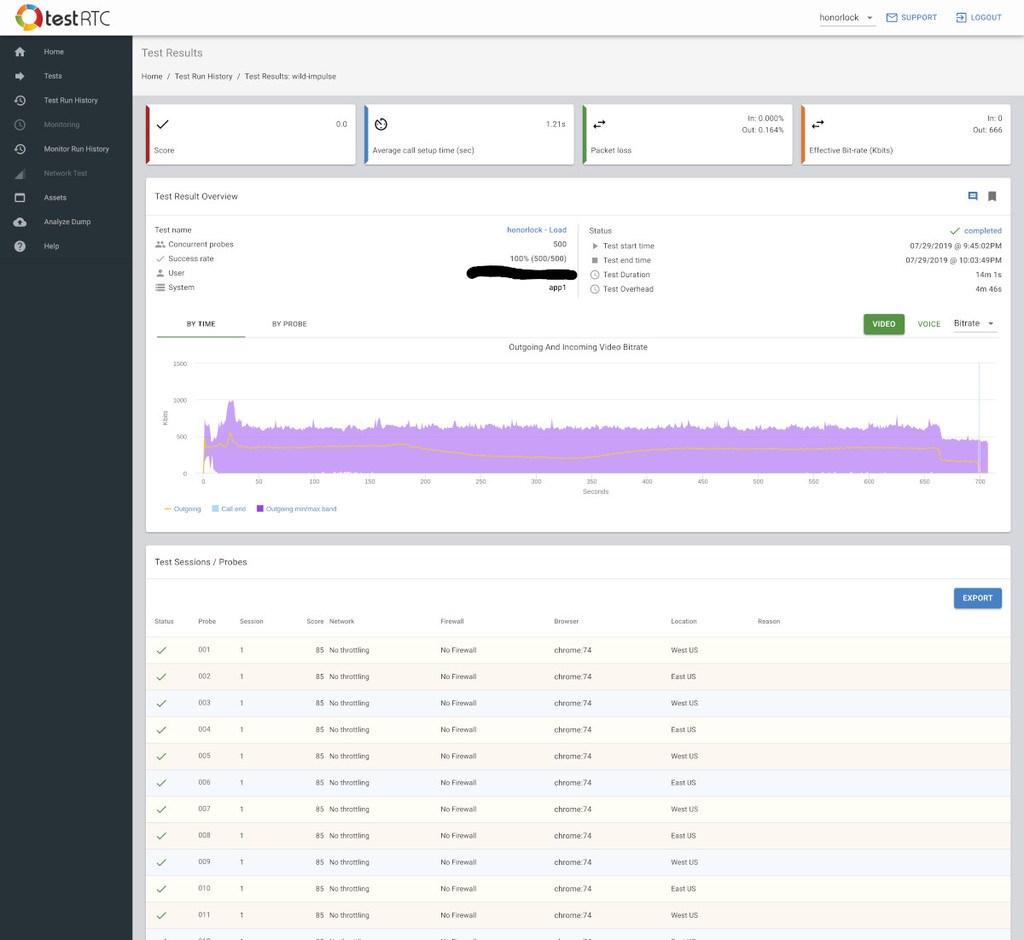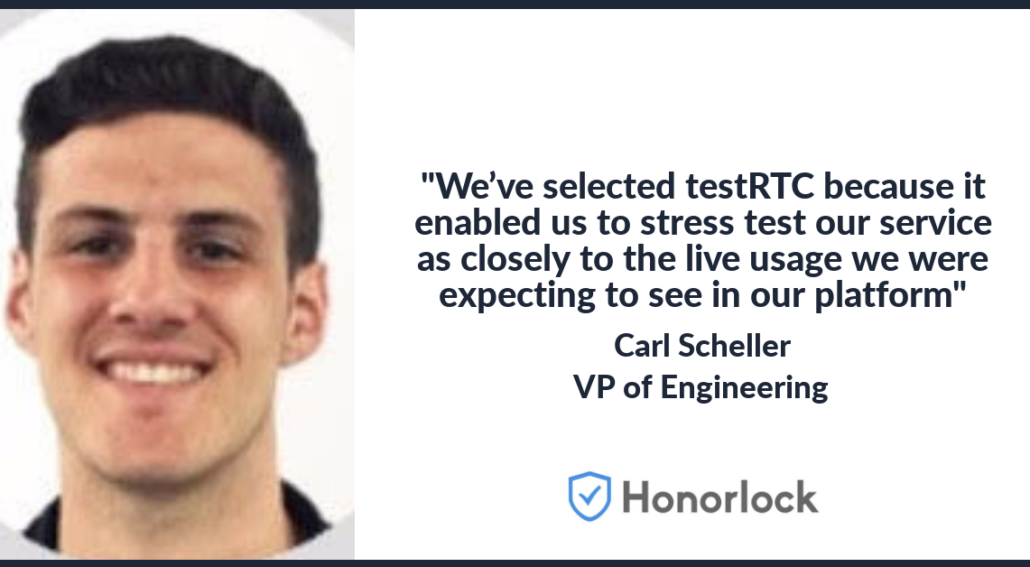This week, I decided to have a conversation with Carl Scheller, VP of Engineering at Honorlock. I knew about the remote proctoring space, and have seen a few clients work with testRTC. This was the first real opportunity I had to understand firsthand about the scale-related requirements of this industry.

Honorlock is a remote proctoring vendor, providing online testing services to higher education institutions. Colleges and universities use Honorlock when they want to proctor test taking online. The purpose? Ensure academic integrity of the students who take online exams as part of their courses.
Here’s the thing – every student taking an exam online ends up using Honorlock’s service, which in turn connects to the user’s camera and screen to collect video feeds in real time along with other things that Honorlock does.
Proctoring with WebRTC and usage behavior
When taking an online exam, the proctoring platform connects to the student’s camera and screen by using WebRTC. The media feeds then get sent and recorded on Honorlock’s servers in real time, along the way passing some AI related checks to find any signs of cheating. The recordings themselves are stored for an additional period of time to be used if and when needed for manual review.
To offer such a secure testing environment requires media servers to record the session for as long as the exam takes place. If 100 students need to take an exam in a specific subject, they might need to do so at the same scheduled time.
Exams have their own seasonality. There is a lot of usage taking place during midterm and final exam periods, whereas January sees a lot less activity when most schools open a lot less.

Online proctoring platforms need to make sure that each student taking an exam gets a high experience no matter how many other students are taking an exam at the same time. This clears students to worry about their test and not about the proctoring software.
Honorlock’s scaling challenge
Honorlock are aware of this seasonality. They wanted to make sure that their application can handle the load in the various areas of the application. Especially due to the expected growth of their business in the near future.
What Honorlock were looking for was an answer to the question: at what point do they need to improve their application to scale further?
Honorlock is using a third party video platform. They have decided early on not to develop and deploy their own infrastructure, preferring to focus on the core experience for the students and the institutions using them.
Honorlock decided not to have a working assumption as to the scale of the third party video platform blindly, and instead went ahead to conduct end-to-end stress testing, validating their assumptions and scale requirements.
When researching for alternatives, it was important for Honorlock to be able to test the whole client-side UI, to make sure the video infrastructure gets triggered the same way it would in real life. There was also a need to be able to test everything, and not only focus on scale testing of each component separately. This led Honorlock to testRTC.

“We’ve selected testRTC because it enabled us to stress test our service as closely to the live usage we were expecting to see in our platform. Using testRTC significantly assisted us in validating our readiness to scale our business.”
Carl Scheller, VP of Engineering, Honorlock
Load testing with testRTC
Once Honorlock started using testRTC, it was immediately apparent that the testing requirements of Honorlock were met:
- Honorlock made use of the powerful scripting available in testRTC. These enabled handling the complexity of the UX of a proctoring service
- Once ready, being able to scale up tests to hundreds or thousands of concurrent browsers made the validation process easier. Especially with the built-in graphs in testRTC focusing on high level aggregate media quality information
- The global distribution of testRTC’s probes and their granular network controls enabled Honorlock to run stress tests with different machine configurations mapping to Honorlock’s target audience of students

A big win for Honorlock was the level of support provided by testRTC throughout the process. testRTC played an important role in helping define the test plan, writing the test scripts and modifying the scripts to work in a realistic scenario for the Honorlock application.
Building a partnership
Working with testRTC has been useful for Honorlock. While the testRTC service offered a powerful and flexible solution, the real benefit was in the approach testRTC took to the work needed. From the get go, testRTC provided hands on assistance, making sure Honorlock get ramp up their testing quickly and validate their scale.
That ability to get hands on assistance, coupled with the self service capabilities found in testRTC were what Honorlock was looking for.
The validation itself assisted Honorlock in uncovering issues in both their platform as well as the third party they were using. These issues are being taken care of. Using testRTC enabled Honorlock to make better technical decisions.

